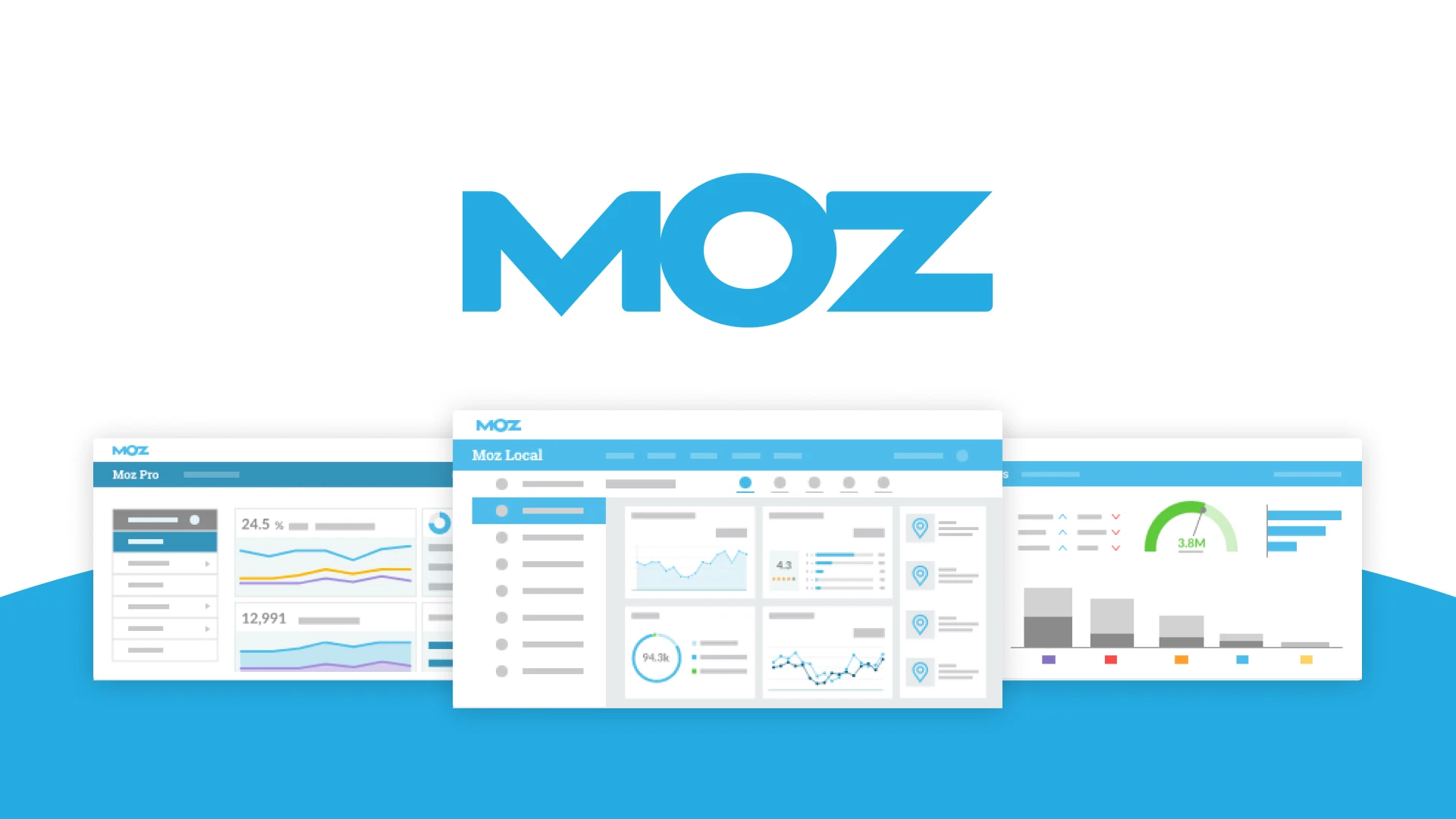The SEO professionals (for Search Engine Optimization) are responsible for optimizing the visibility and indexing of a website on search engines. They want a website to be referenced as well as possible, that is to say that it appears in the first results of a search engine, before those of its competitors.
What are the missions of SEO professionals ?
The SEO professionals always seek to increase traffic on a website with the aim of attracting targeted visitors in order to increase the conversion rate. To achieve these different objectives and goals, they use natural referencing tools, more commonly known as SEO (Search Engine Optimization). First, before considering any optimization technique, the SEO professionals begin by carrying out an audit of the website. They evaluate the code of the website, identifying the technical brakes which would prevent from reaching the desired positions in the search engine results page (SERP).
The SEO professionals study the positioning and competition. They are also interested in the content of the website’s pages and their internal as well as external links. Once this diagnostic step has been completed, it is possible to determine the actions to be taken for the sake of a perfect search engine optimization (SEO). It is then a question of delivering an action plan containing all the possible improvements on three levels. First is the technical improvements (optimization of image alt tags, meta descriptions, titles, headings, tags, etc.).
Second are semantic improvements, where the aim is to check whether the keywords used are consistent with the products and/or services sold and the image of the company. Third level in possible improvements by the SEO professionals concern the popularity. Their audit will check the hypertext links from external websites. This is a very important step in search engine optimization, which is called netlinking. This is because it allows you to gain visibility from natural referencing. Then comes the design and implementation of an effective SEO strategy based on the diagnosis carried out previously.
This strategy may relate to semantic and/or technical improvements. Concerning the latter, a list of recommendations is suggested for improving the search engine optimization. The SEO professionals should ensure the proper functioning of each element in his list of recommendations. For the semantic part, they will notably use the many tools available, which can also relate to netlinking. When improving a website, the strategy should also focus on defining the keywords to use. This will serve to increase traffic to the website but also to maximize the conversion rate.
If the website has already been created, the semantics should be optimized. This is done by choosingg keywords that will be frequently used queries. The structuring of the web pages content, and the choice of keywords, should be greatly taken care of. The SEO professionals will then create a semantic cocoon to link the content together and create a quality mesh. These are important to ensure indexing that will allow you to be placed in the best possible position on search engines. The semantic cocoon aims to link pages that are semantically close to best reach the requests expected from Internet users.
To create this, SEO Specialist elaborates an editorial plan, with a content production schedule. It will also be necessary to manage effective backlinks to promote good indexing, that is to say to obtain a mesh of quality links and a mix of links in do follow, with a significant diversity of anchors. The implementation of sitemaps will also help search engines find the URLs to index. The SEO professionals must therefore be able to manage these sitemaps, and they may also use A/B Testing to determine which solution will give the best results. This can concern texts or elements of user experience design.
In the evolving landscape of digital marketing, search engine optimization has become both sophisticated and more essential than ever before. SEO professionals must navigate a complex interplay of algorithms, user intent, content quality, technical requirements, and competitive pressures to secure top positions on search engines. As 2025 progresses, advanced SEO strategies go far beyond simple keyword placement or link acquisition. Instead, they involve a comprehensive understanding of how search engines evaluate sites, how users interact with content, and how to deliver sustained value that drives measurable business results.
One of the most critical aspects of modern SEO is understanding and aligning with user intent. Search engines have grown remarkably good at interpreting what users want, and their ranking algorithms have shifted accordingly. It’s no longer enough to target high-volume keywords indiscriminately. Professionals must instead analyze search intent carefully and segment it into categories like informational, navigational, transactional, and commercial investigation.
This enables the development of content that precisely answers the user’s need in context. For instance, an e-commerce site aiming to rank better must produce well-researched comparison guides, reviews, and even user-generated content (UGC) that establishes authority and trust, rather than just product pages with sales copy.
Beyond intent, content quality remains a cornerstone of advanced SEO strategies. Google’s Helpful Content system, introduced in the early 2020s and continuously refined, prioritizes original, useful, and people-first content. This means SEO professionals in 2025 must work closely with content creators, subject matter experts, and editors to ensure that articles, landing pages, and multimedia assets deliver genuinely helpful answers.
Thin, duplicate, or AI-generated filler content with no real value is quickly identified and devalued by search engines. Moreover, freshness is a ranking factor for many queries, so a good SEO plan must include processes for regularly updating evergreen pages to keep them relevant and accurate.
Technical SEO professionals have also evolved into a highly specialized discipline. While basic on-page optimization remains necessary, advanced practitioners must go much deeper. This includes optimizing for Core Web Vitals, which are a set of metrics that measure loading speed, interactivity, and visual stability. Sites that fail these metrics often see ranking penalties, especially on mobile devices where user patience is limited.
Additionally, professionals must ensure that a website is fully crawlable and indexable, avoiding pitfalls like broken links, redirect loops, or blocked resources in the robots.txt file. XML sitemaps need to be kept up to date, with only canonical, indexable pages included to avoid confusing search engines or wasting crawl budget.
Mobile optimization is no longer an optional consideration for SEO professionals but a fundamental requirement. The majority of global searches take place on mobile devices, and Google uses mobile-first indexing. This means the mobile version of your site is what Google evaluates for ranking purposes.
Sites must be responsive, with layouts that adapt gracefully to different screen sizes, buttons and menus that work seamlessly on touchscreens, and text that can be read without zooming. In 2025, Progressive Web App (PWA) technology is also seeing more widespread use, offering near-native mobile app experiences with fast loading, offline capabilities, and push notifications, all of which can improve user engagement and, indirectly, search rankings.
Another important facet of modern SEO strategy is structured data. By using schema markup, SEO professionals can help search engines better understand the content of their pages, making them eligible for rich results like review stars, FAQs, how-tos, product carousels, and even knowledge graph entries. This can dramatically improve click-through rates (CTR), even if the ranking position itself doesn’t change. In 2025, search engines continue to expand the types of rich results they support, rewarding sites that implement and maintain high-quality structured data.
Beyond on-page and technical SEO, link building remains a critical, if controversial, component of success. However, the practice has matured significantly from its early days of spammy directories and paid link schemes. Effective modern link building emphasizes earning links organically through high-value content, digital PR, and partnerships. For example, a company might publish original research or industry surveys that others in the field cite naturally.
Outreach campaigns might involve SEO professionals building relationships with journalists or bloggers to secure coverage that includes backlinks. This is time-consuming work, but links acquired in this way tend to be high-quality, topically relevant, and resilient to algorithm updates.
In addition to external links, internal linking has emerged as a powerful yet underutilized SEO lever. By carefully planning internal link structures, professionals can distribute page authority throughout a site and help search engines discover and understand new content. A well-executed internal linking strategy might involve creating topic clusters, where a central pillar page links to, and is linked back from, multiple supporting pages on related subtopics. This helps search engines see the depth of coverage on a given topic and can boost rankings across the entire cluster.
Content planning for advanced SEO professionals involves much more than posting. It requires the creation of detailed editorial calendars informed by keyword research, competitor analysis, and seasonal trends. Modern keyword research tools offer insights not only into search volumes but also questions users ask, related topics, and even gaps in competitors’ content. This allows SEO teams to identify opportunities where they can create superior resources. Content briefs provided to writers increasingly include detailed guidelines for target keywords, semantic variations, user intent, preferred structure, tone of voice, and even internal link targets.
SEO professionals in 2025 also need to understand how to work with AI and automation to improve efficiency and results. Tools powered by natural language processing can help with tasks like clustering keywords by intent, generating meta descriptions at scale, or summarizing competitor content. AI content generation, while not a substitute for expert-written material, can be used to accelerate drafts or generate outlines. However, it is vital to maintain editorial oversight to ensure quality, originality, and alignment with brand voice.
Search engines are increasingly adept at identifying low-quality AI content and penalizing sites that try to flood the index with automatically generated fluff. Local SEO is another domain that demands specialist attention. Businesses with physical locations or service areas need to optimize their Google Business Profiles, collect and respond to reviews, ensure name, address, phone consistency across citations, and build local backlinks. For local queries , search engines prioritize results with strong local signals. Additionally, local content, like city pages or neighborhood guides, can improve visibility for geographically targeted searches.
E-commerce SEO presents its own unique challenges. Product pages must be optimized not only for user experience (UX) and conversion but also for crawlability and rich results eligibility. Faceted navigation, including filters for size, color, brand, etc., can create duplicate content issues if not properly handled by SEO professionals with canonical tags or parameter controls. Product availability, pricing, and structured data must be kept up to date to avoid user frustration and ranking penalties. User-generated content such as reviews can add valuable, fresh content to product pages, improving relevance and trust.
One of the more recent evolutions in search is the rise of multi-modal and voice search. People increasingly ask questions to assistants or search using images. SEO professionals need to consider how to optimize content for these use cases. For voice search, this often means answering questions concisely, structuring content with clear headings and lists, and using schema markup for FAQs. Concerning visual search, ensuring high-quality images with descriptive alt text and supporting structured data can help products surface in image search or even on platforms like Google Lens.
As algorithms become more sophisticated, search engines also evaluate user behavior signals as indirect ranking factors. Metrics like click-through as well as bounce rate, dwell time, and return visits provide clues about the quality and relevance of search results. While these signals can be noisy and hard to optimize directly, they reinforce the need for excellent user experience. Slow-loading pages, intrusive interstitials, or confusing navigation can all drive users away and harm rankings over time.
In the B2B space, SEO often requires alignment with longer, more complex sales cycles. Content strategies must nurture users through awareness, consideration, and decision stages. This might involve detailed whitepapers, case studies, industry analyses, and gated content that trades value for leads. SEO professionals in B2B contexts work closely with sales and marketing teams to ensure that organic traffic not only grows but converts into qualified opportunities.
Reporting and analytics have also grown more sophisticated. Gone are the days of relying solely on keyword rankings as a measure of success. Modern SEO strategies involve tracking a range of KPIs, including organic traffic, conversions, revenue attribution, user engagement metrics, and the health of the site’s index. Tools like Google Analytics, Search Console , log file analyzers, and specialized crawling software provide rich data that must be interpreted thoughtfully. Advanced SEO professionals build dashboards to monitor performance, identify opportunities, and demonstrate ROI to stakeholders.
SEO strategy in 2025 is not static but iterative. Algorithm updates, competitor moves, and changing user behavior mean that plans must be continually revised. Professionals often work in agile cycles, testing changes, measuring results, and refining tactics. A/B testing is a particularly valuable tool here, not only for UX elements like button placements or headlines but also for evaluating the impact of different content approaches, schema configurations, or internal linking structures on SEO outcomes.
Modern SEO is rarely siloed. It increasingly integrates with other digital marketing disciplines such as paid search (SEM), social media, content marketing, and conversion rate optimization (CRO). For example, insights from paid search campaigns can inform SEO keyword strategies, while organic content can be promoted through social channels to accelerate link acquisition. SEO professionals must therefore be strong collaborators, capable of working across departments to achieve unified goals.
The role of SEO professionals in 2025 is both broader and deeper than ever before. They must combine technical expertise with strategic thinking, content planning, UX design, data analysis, and relationship building. Success in this field requires staying ahead of algorithm changes, understanding user needs better than competitors, and delivering sustained value that benefits both the business and its audience. In a world where search engines aim to surface the most helpful, relevant, and trustworthy content, SEO professionals who commit to quality, integrity, and user focus will continue to thrive.
Moreover, ethical considerations in SEO have become increasingly prominent. Search engines are cracking down on manipulative tactics, making transparency and user trust essential components of a winning strategy. Practices like cloaking, doorway pages, and manipulative link schemes are more easily detected and penalized, often with long-lasting damage to a site’s reputation and rankings. As a result, SEO professionals are expected to prioritize ethical guidelines not only for the sake of compliance but also to protect their brand’s credibility in the eyes of users and partners.
This ethical dimension also extends to accessibility. Ensuring that a website is usable for people with disabilities is not just about compliance with laws or avoiding penalties, but it directly supports better SEO by improving site structure, descriptive text, and overall usability. Screen reader-friendly markup, clear navigation, and thoughtful content hierarchy help all users and make a website more understandable to search engines. In this sense, SEO in 2025 is about building better websites for everyone, recognizing that the path to high rankings is aligned with the goal of creating genuinely valuable, inclusive, and satisfying online experiences.











